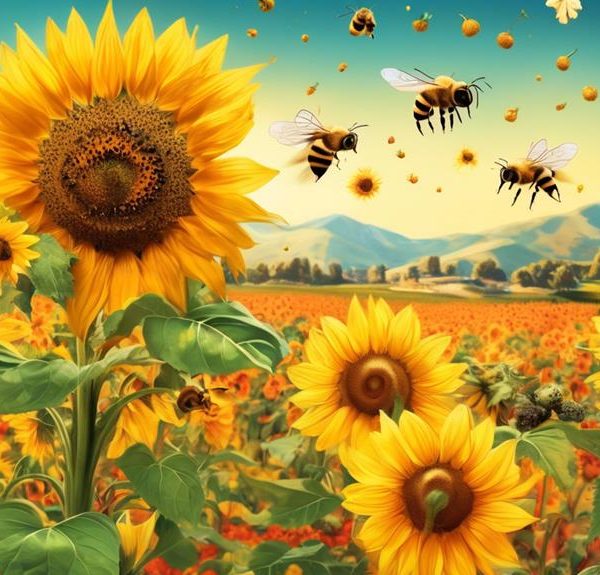Intrigue buzzes as we delve into the mysterious reasons behind honeybees' seemingly traitorous behavior against their queen.
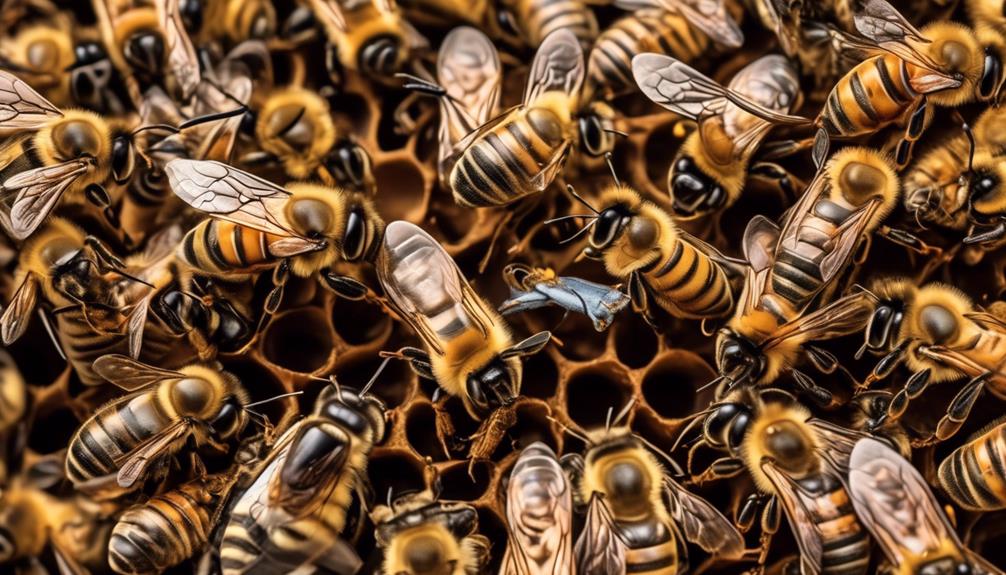
Why Do Bees Try to Kill Their Queen?
Imagine you're observing a bustling honeybee hive, a marvel of nature's intricate social structures, only to find the worker bees turning on their queen, the very heart of their colony.
It's a perplexing behavior you'd hardly expect from these often glorified, industrious insects. What could possibly prompt these loyal workers to rebel against their queen, the one who ensures the survival of their species?
It's not simply a manifestation of anarchy in the hive, but rather a complex, essential aspect of bee behavior that's deeply embedded in their survival strategy.
So, strap in, as we venture into the fascinating world of these buzzing insects and the mysteries behind their seemingly treacherous actions.
Key Takeaways
- Bee colonies function as a superorganism with three types of bees: queen, drones, and worker bees.
- The queen's role is to reproduce and lay up to 2,000 eggs a day, while drones mate with the queen and worker bees perform various tasks for the colony.
- Circumstances like decreased pheromone production, improper mating, disease or parasite infection, or loss of the queen can provoke worker bee rebellion.
- The process of supersedure involves replacing a failing queen through selectively feeding larvae with royal jelly to develop new queens, with the first new queen killing her sisters to ensure her sole reign. Successful supersedure ensures the hive's prosperity and productivity.
Understanding Bee Social Structure
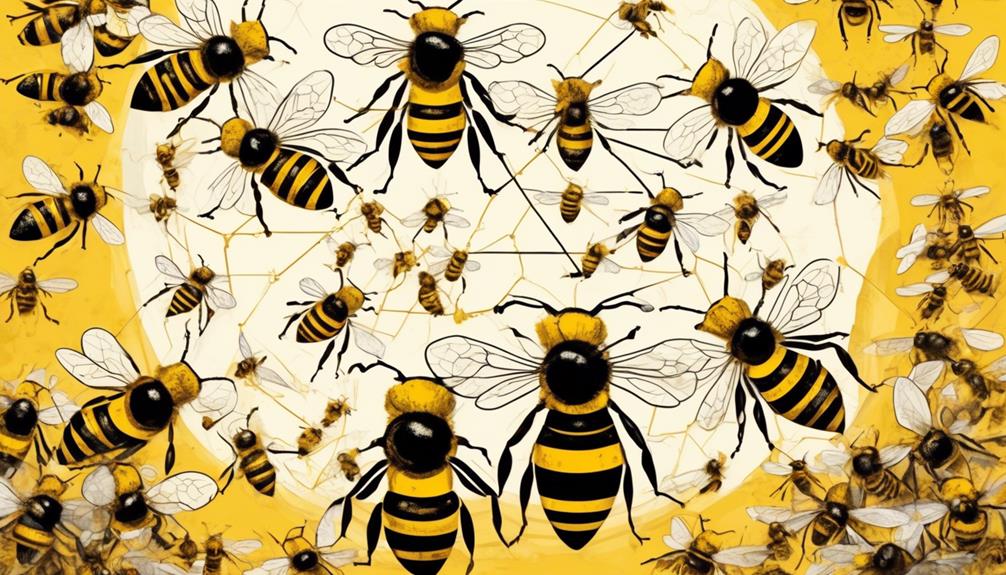
Before diving into the phenomenon of bees attempting to assassinate their queen, it's crucial to grasp the intricacies of their social structure. Bee colonies function as a superorganism, meaning the hive operates as a single entity, rather than as individual bees. You'll find three types of bees within a hive: the queen, drones, and worker bees.
The queen's role is to reproduce. She's the only sexually mature female in the colony and can lay up to 2,000 eggs a day. Drones are the males. Their sole purpose is to mate with the queen. Once they've accomplished this task, they die.
Worker bees, however, are the backbone of the hive. They're infertile females who perform various tasks to maintain the hive: gathering food, caring for the young, and defending the colony. They also determine the queen's fate. If the queen is failing or dead, they'll start raising a new queen.
Understanding this structure is key. It sheds light on bees' behavior, including the occasional overthrow of their queen. This isn't a random act, but a calculated decision for the colony's survival.
The Role of the Queen Bee
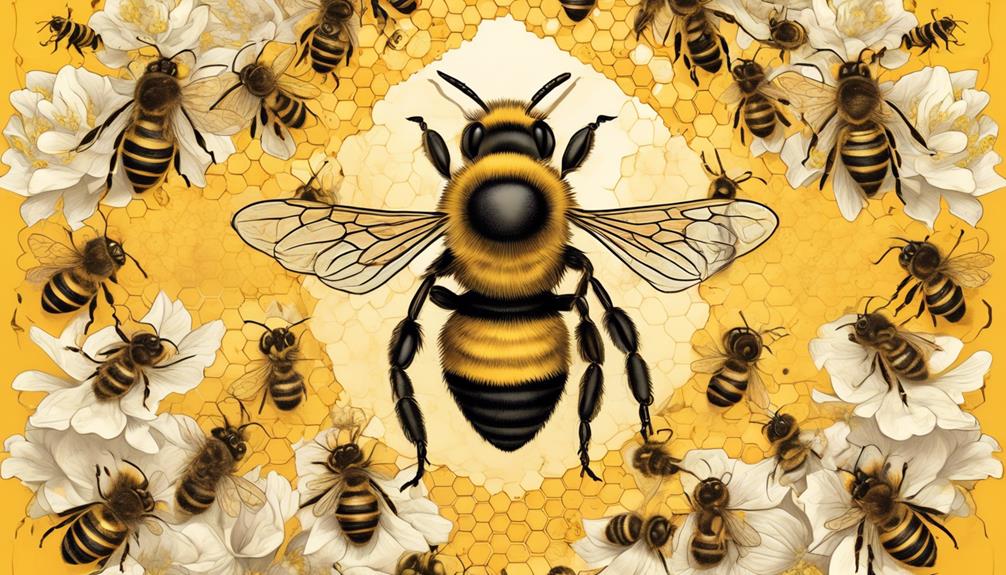
Shifting our focus to the queen bee, we must note her central role within the hive's social structure, as she's not just an egg-laying machine, but also a critical decision maker. She's the only female in the hive capable of producing fertilized eggs, thus ensuring the survival and propagation of the colony. Her unique pheromones, a complex cocktail of chemical signals, not only control the behavior of worker bees but also inhibit their ovaries, preventing them from laying eggs.
But she doesn't operate independently. Her decisions are often influenced by worker bees, who communicate the colony's needs through their behavior. If resources are scarce, they'll reduce feeding the queen, thereby controlling her egg production. In times of abundance, they'll boost it.
Yet, it's also a role fraught with danger. Worker bees may decide to replace her if she's not performing optimally or if she's aged. They'll rear new queen larvae, eventually leading to a deadly duel of queens. Ultimately, the queen's role is both powerful and perilous, a delicate balance between maintaining dominance and facing potential usurpation.
Circumstances That Provoke Bee Rebellion
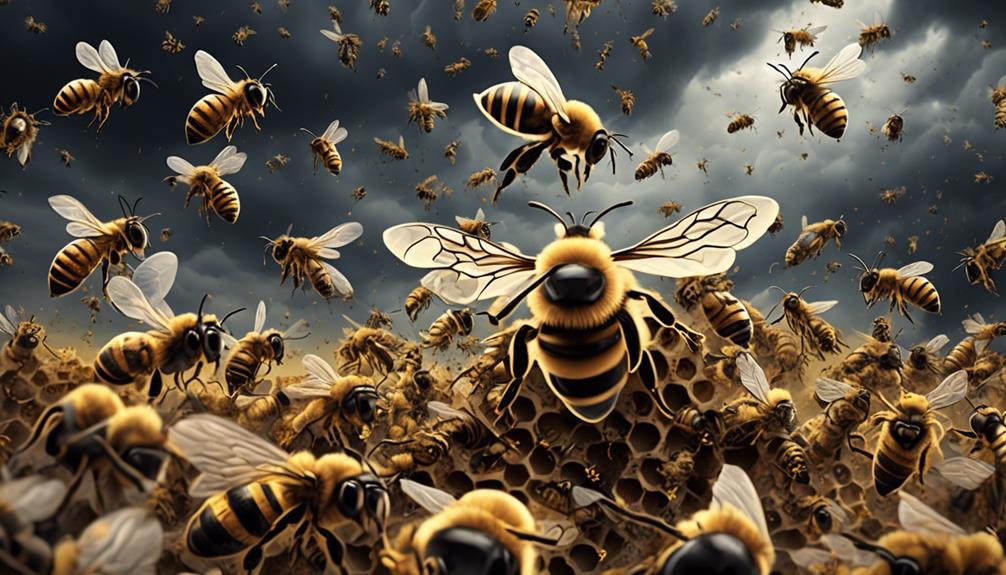
Under certain conditions, you'll find that worker bees rise in a rebellion against their queen, a phenomenon triggered by a variety of factors. One of the most common causes is the queen's decreasing pheromone production, which is a sign of her aging or weakening. This chemical signal is vital for hive's harmony. When it's low, workers sense the queen's vulnerability and may try to supersede her.
Another circumstance is when the queen fails to mate properly or enough times. A queen's fertility is crucial for the survival of the colony because she's responsible for laying all the eggs. If she's not producing enough fertilized eggs, the colony's population declines, which threatens its survival.
Then, there's the issue of disease. If the queen becomes infected with a disease or parasite, her health and productivity suffer. The workers, recognizing the threat to the hive's health, may decide to eliminate her.
Lastly, a queen who doesn't return from her mating flight is considered lost or dead. In her absence, the workers have to raise a new queen swiftly to avoid a collapse. You see, even in the insect world, survival is paramount, and if the queen jeopardizes it, she's removed.
The Process of Supersedure
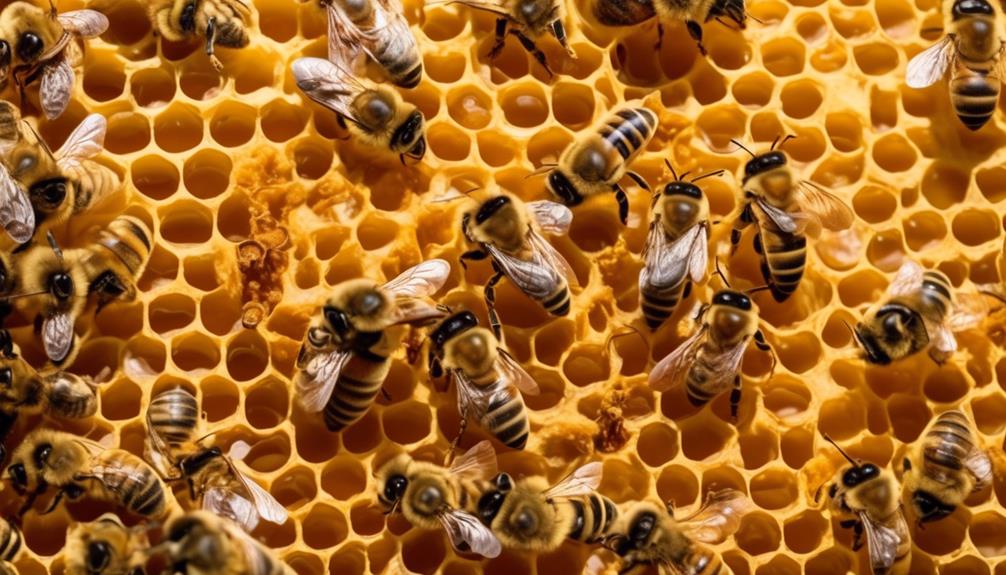
Drawing from the various reasons for a bee rebellion, let's now explore the fascinating process of supersedure, where the worker bees take decisive action to replace their failing queen. This phenomenon is an evolutionary strategy designed to ensure the hive's survival.
Supersedure begins when the existing queen's pheromone production declines, signaling her failing health or decreasing fertility. Worker bees detect this change and take action. They start by selectively feeding a few larvae with copious amounts of royal jelly, a substance that triggers the development into queens.
During this period, the old queen is still alive, laying eggs, but her days are numbered. The first new queen to emerge doesn't hesitate. She seeks out her sisters, still in their cells, and kills them, ensuring her sole reign.
However, in some instances, the old queen isn't immediately killed. There's a period of coexistence, a delicate balance where the old and new queen share the hive. It's a pivotal period in the hive's life, filled with tension.
In the end, the new queen takes over, either by outliving the old queen or through a worker-led assassination. This harsh reality is a testament to nature's unforgiving rule: survival of the fittest.
Impact on the Hive's Future
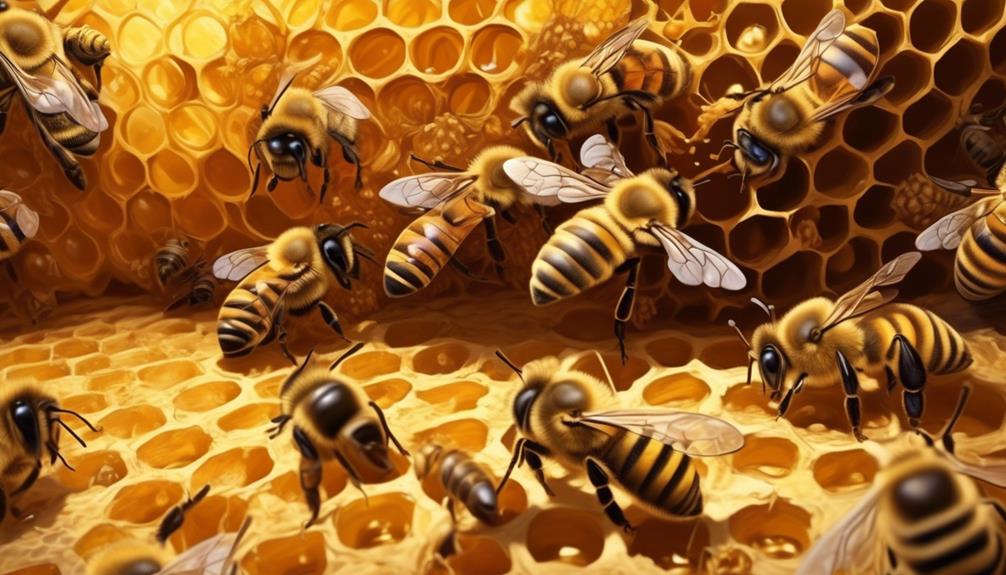
The supersedure process has profound implications for the hive's future, dictating its health, productivity, and the continuity of its population. If a hive is unsuccessful in replacing its queen, it's faced with potential extinction. With no queen to lay eggs, the bee population dwindles, leading to decreased productivity and eventual collapse.
On the other hand, successful supersedure ensures the hive's prosperity. A new, more fertile queen takes the reins, laying more eggs and thereby increasing the population. This boosts the hive's productivity in terms of pollination and honey production.
However, this process isn't without risks. The swift and successful replacement of the queen is crucial. If the new queen doesn't survive or fails to mate adequately, you're back to square one, with the hive's future hanging in the balance.
Also, during this transition period, the hive is vulnerable to attacks from predators and rival hives, which could threaten its very existence. Therefore, while the supersedure process is a natural mechanism for ensuring the hive's survival, it's also a delicate, high-stakes game that determines the hive's future.
Frequently Asked Questions
What Are the Main Differences Between a Queen Bee and a Worker Bee?
You're asking about the differences between queen bees and worker bees.
A queen bee's main role is reproduction, she's larger and has a longer lifespan.
Worker bees, on the other hand, are smaller, live shorter lives, and perform various tasks like foraging for food, cleaning the hive, and caring for larvae.
They're both female, but only the queen bee can lay fertilized eggs.
How Do Bees Communicate Within the Hive?
You'd be amazed to know that bees communicate within the hive through a 'waggle dance'. It's a form of language they've developed. The dance involves certain movements and vibrations, which convey specific directions or locations of food sources.
They also use pheromones for communication, which is a sort of chemical language. Isn't that fascinating? Even these tiny creatures have such complex communication systems!
Are There Any Other Insects That Exhibit Similar Behavior Towards Their Queen?
Yes, there are other insects that show similar behavior towards their queen.
For instance, ants, like bees, are known for their eusocial structure. When the queen ant's reproductive capabilities decline, worker ants can turn against her, leading to her death. They'll then help a new queen, often a daughter, take over the colony.
You might find it harsh, but it's nature's way of ensuring the survival and continuity of the species.
What Methods Do Bees Use to Kill Their Queen?
You're curious about how bees kill their queen. They use a method called 'balling.'
Worker bees surround the queen, forming a tight ball. They then vibrate their bodies intensely, generating heat through muscular exertion. This process, known as 'thermo-balling,' raises the temperature within the ball, effectively suffocating and overheating the queen.
It's a grim process but a vital one in the context of bee colony survival and health.
Is There a Specific Time of Year When This Rebellion Is Most Likely to Occur?
You're wondering if there's a specific time bees are most likely to rebel against their queen.
Typically, this behavior, known as 'supersedure,' happens anytime the queen's productivity declines.
However, it's more common in late summer or early fall.
During these seasons, the queen's egg-laying rate decreases, which can lead to dissatisfaction within the hive, triggering the bees to replace her.
Conclusion
So, you've learned about the intricate social structure of bees, the queen's role, and the reasons behind hive rebellion. You've discovered supersedure, a natural process where bees replace their faltering queen. You've explored the impact of these actions on the hive's future.
Understanding this, it's clear that bees don't simply wish to kill their queen, but rather, they're driven by survival instincts to ensure the longevity of their colony.
It's a fascinating insight into the world of bees.


